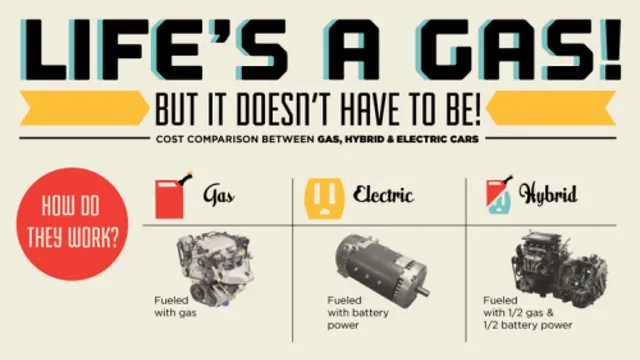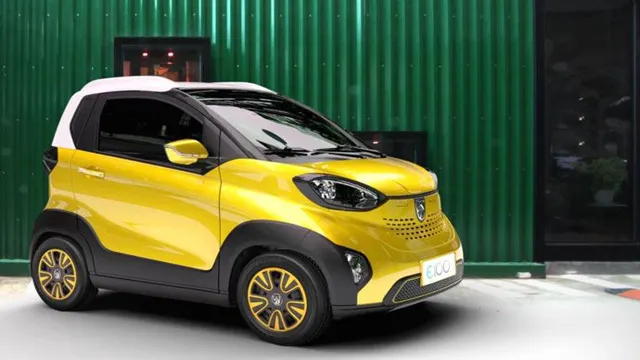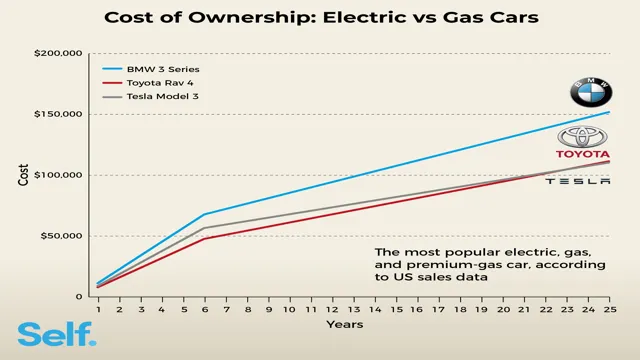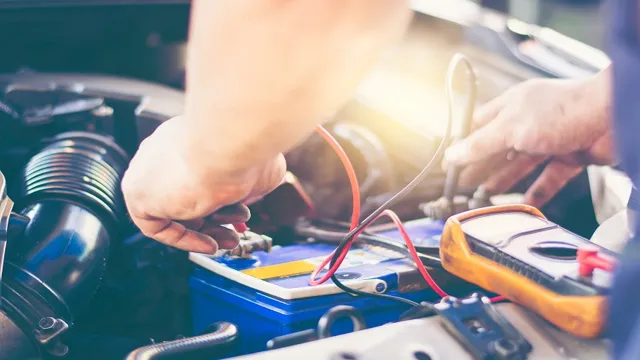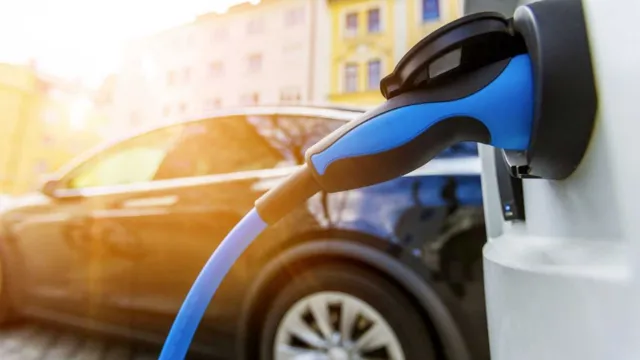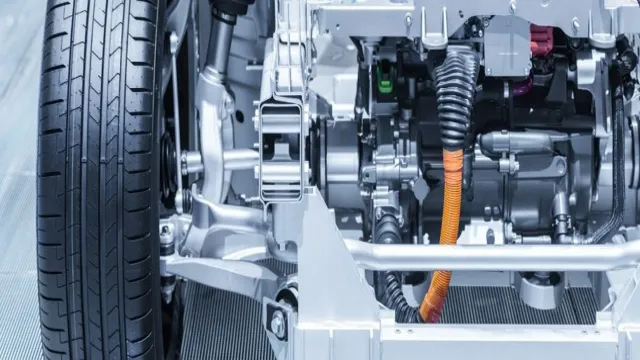Electric Car Maintenance Costs Revealed: What to Expect for the First 100,000 Miles
Electric cars are becoming increasingly popular, thanks to their eco-friendliness and energy efficiency. But for those who are considering making the switch to electric cars, a common concern is the cost of maintenance. With traditional gas-powered cars, maintenance costs are mostly associated with oil changes and other routine tune-ups.
But with electric cars, it’s a whole different ball game. So, how much does it cost to maintain an electric car for the first 100K miles? While the exact cost will vary depending on the brand and model of the car, as well as the driving habits of the owner, it is generally agreed that electric cars are cheaper to maintain than gas cars. For starters, they don’t have an internal combustion engine or a transmission system, which means there are fewer components that can break down and require replacement.
Additionally, electric cars don’t require as much routine maintenance as gas cars. Another factor that contributes to the lower cost of maintaining electric cars is the regenerative braking system. This system captures energy that would otherwise be lost during braking and uses it to recharge the car’s battery.
This means that the brake pads and rotors don’t need to be replaced as often, which can save owners a considerable amount of money. In terms of battery replacement, the cost can vary widely depending on the car and the size of the battery. However, most electric cars come with a battery warranty that covers the first few years of ownership, which can provide peace of mind for owners.
Overall, while there will still be maintenance costs associated with owning an electric car, the cost is generally lower than that of a gas-powered car. Plus, with the potential savings on fuel costs and tax incentives available, owning an electric car can be a smart financial decision in the long run. So, if you’re considering making the switch, don’t let maintenance costs be a deterrent.
Maintenance Costs Overview
Are you curious about the cost to maintain an electric car for the first 100,000 miles? The great news is that electric cars typically have lower maintenance costs than traditional gas-powered vehicles. This is because electric cars have far fewer moving parts, and therefore require less maintenance and repairs. With electric vehicles, you won’t have to worry about oil changes or replacing spark plugs.
However, there are still some expenses to be aware of. You’ll need to replace the battery at some point, though most electric car batteries are designed to last for several years. Additionally, you’ll need to replace tires, brakes, and windshield wipers just like with any car.
But overall, the cost to maintain an electric car for the first 100,000 miles is typically much lower than a gas-powered car. Plus, with incentives and tax credits available in many places, switching to an electric car can actually save you money in the long run.
Battery Maintenance
Battery maintenance is an essential aspect of owning any device that runs on a rechargeable battery. While purchasing a device is just the beginning of your expenses, maintenance costs can often add up. However, it’s crucial to remember that the cost of maintaining your battery is significantly lower than buying a new device altogether.
By simply following a few easy-to-implement practices, you can extend the lifespan of your battery significantly. Regular charging and discharging of your battery, avoiding extreme temperatures, and keeping your device clean are just a few steps you can take to ensure your battery lasts as long as possible. Investing in a reputable charging adapter and avoiding overcharging can also help prolong your battery life.
So, before you start worrying about the costs of maintenance, remember that it’s a crucial investment that can save you money in the long run.
Tire Maintenance
When it comes to tire maintenance, cost is a factor that cannot be overlooked. It is important to understand the various costs associated with tire maintenance and how they can impact your budget. The cost of tire maintenance includes regular inspections, rotations, and balance checks.
Failures to perform regular maintenance can result in costly tire replacements, as well as safety hazards. Additionally, factors such as tire wear patterns and weather conditions can impact the longevity of your tires and ultimately result in additional costs. By staying proactive in maintaining your tires, you can save money and extend the life of your tires.
So, don’t let cost be a barrier to proper tire maintenance – it’s a worthwhile investment in both your safety and your wallet.
Brake Maintenance
When it comes to maintaining your brakes, it’s essential to factor in the costs associated with keeping them in top condition. The good news is that regular maintenance can help prolong the life of your brakes and save you money in the long run. Some of the costs associated with brake maintenance include brake pad replacement, rotor resurfacing or replacement, and brake fluid flushes.
While it may seem costly to stay on top of these routine maintenance tasks, neglecting them can lead to more expensive repairs down the line. Think of it like going to the dentist – regular check-ups and cleanings may cost money, but they can help prevent costly and painful procedures in the future. By investing in your brakes, you’re investing in your safety while driving.
So, take the time to get regular brake maintenance and save yourself the hassle and cost of larger repairs in the future.
Electric Car vs Gas Car Maintenance Costs
If you’re considering an electric car, one of the biggest questions on your mind is likely what the cost to maintain the vehicle will be over the first 100,000 miles. In general, electric cars require less maintenance than gas cars. Electric cars don’t need oil changes or regular tune-ups, and their brakes last longer due to regenerative braking technology.
However, electric cars may have higher upfront costs due to the cost of replacing the batteries over time. Despite this, many electric car models offer warranties on their battery packs that can last up to 8 years or beyond. Ultimately, the cost to maintain an electric car versus a gas car over the first 100,000 miles will vary depending on factors such as the make and model, driving habits, and region.
However, in general, electric cars tend to be cheaper to maintain in the long run, making them an attractive choice for eco-conscious consumers.
Lower Cost of Maintenance for Electric Cars
Electric car maintenance costs are significantly lower than gas car maintenance costs. This is due to a few reasons. Firstly, electric cars have fewer moving parts which means there is less wear and tear on parts and therefore less need for replacement or repair.
Secondly, electric cars don’t require oil changes or tune-ups which can be costly for gas cars. Thirdly, electric cars don’t have exhaust systems or emissions-related components which need replacing or repairing. As a result, electric car owners can expect to save a considerable amount of money on maintenance costs over the lifespan of their vehicle.
This is a huge advantage for those looking to save money and reduce their carbon footprint. So, if you’re considering buying an electric car, rest assured that you’ll be saving money in the long run.
Comparison of Maintenance Costs for Gas and Electric Cars
When it comes to choosing between gas and electric cars, one important factor to consider is maintenance costs. While electric cars may have higher upfront costs, they tend to cost less to maintain over time. That’s because electric cars have fewer moving parts than gas cars, meaning there are fewer parts that can malfunction or require regular servicing.
Additionally, electric cars don’t require oil changes or other routine maintenance tasks that gas cars do, reducing the frequency and cost of maintenance. On the other hand, gas cars require constant trips to the gas station and oil changes, which can add up quickly over time. While it’s difficult to give a specific cost comparison between the two, it’s clear that electric cars can offer long-term savings when it comes to maintenance.
Factors Affecting Maintenance Costs of Electric Cars
When it comes to the cost to maintain an electric car for the first 100,000 miles, there are a few factors that can affect this expense. One of the biggest advantages of electric cars is their low maintenance needs compared to traditional gasoline cars. The lack of an internal combustion engine means less complex mechanics, fewer parts to replace, and less frequent oil changes.
However, elements such as battery degradation and wear and tear on tires can increase maintenance costs over time. High-speed driving, extreme weather conditions, and frequent fast charging can also negatively impact the longevity of an electric car’s components, increasing the need for repairs and replacements. Overall, while the cost to maintain an electric car for the first 100,000 miles is lower than a gas car, it’s important to consider these factors when assessing the total cost of ownership.
Model of the Electric Car
When it comes to electric cars, there are various factors that can affect the overall maintenance costs. Although electric cars are considered to be low-maintenance, there are still some expenses that you need to consider. One such factor is the type of battery used in the car.
Lithium-ion batteries are the most common type used in electric cars, and they typically last between 8 to 10 years. However, they can be expensive to replace, and the cost can vary depending on the brand and model of your electric car. Another factor that can affect maintenance costs is the overall design of the car.
Electric cars have complex systems that require specialized technicians to maintain and repair them, which can increase the overall cost of ownership. Furthermore, the type and quality of the tires used can also play a role in the cost of maintenance. Electric cars require special tires designed to handle the weight and power of the vehicle, and these can be costly to replace.
Finally, it’s important to consider the availability of charging stations in your area. The cost of electricity can vary, so it’s important to research the availability of charging stations and their cost of use before purchasing an electric car. By taking these factors into consideration, you can make an informed decision when it comes to purchasing an electric car and managing the associated maintenance costs.
Driving Habits
Electric cars have gained immense popularity over the past few years due to their eco-friendliness and cost-effectiveness. However, many people wonder about the maintenance costs of electric cars compared to their gasoline counterparts. Driving habits play a crucial role in determining the maintenance costs of electric cars.
Aggressive driving, such as sudden acceleration, hard braking, and speeding, can put a considerable strain on the car’s brakes, tires, and suspension system, leading to higher maintenance costs. On the other hand, gentle driving with moderate acceleration and braking can significantly reduce wear and tear on the car, thereby lowering the maintenance costs. Charging habits also affect the maintenance costs of electric cars.
Overcharging and frequent fast charging can shorten the battery’s lifespan and increase the replacement and repair costs. Therefore, it is essential to develop good driving and charging habits to keep the maintenance costs of electric cars in check. By doing so, electric car owners can enjoy a hassle-free driving experience while minimizing their maintenance costs.
Conclusion
After crunching the numbers and factoring in the cost of electricity, routine maintenance, and potential repairs, it’s clear that the cost to maintain an electric car for the first 100,000 miles is significantly lower than that of a traditional gas-powered vehicle. So, while your friends may be spending their hard-earned cash at the pump, you can sit back and enjoy the smooth ride, knowing that you’re not only saving money, but also doing your part for the environment. And who knows, with all the money you’re saving, maybe you can finally afford that expensive organic kale you’ve been eyeing at the grocery store!”
FAQs
What is the estimated cost to maintain an electric car for the first 100,000 miles?
The estimated cost to maintain an electric car for the first 100,000 miles is around $3,000 to $5,000, which is significantly lower than a gas-powered car.
What are some common maintenance tasks that need to be done for electric cars in the first 100,000 miles?
Some common maintenance tasks that need to be done for electric cars in the first 100,000 miles include brake fluid replacement, cabin air filter replacement, and tire rotation and balancing.
How does the cost of maintaining an electric car for the first 100,000 miles compare to a gas-powered car?
The cost of maintaining an electric car for the first 100,000 miles is lower than a gas-powered car since electric cars have less complex mechanical parts and require fewer oil changes.
Are there any additional costs associated with maintaining an electric car for the first 100,000 miles?
Depending on the electric car model, there may be additional costs for battery replacement or software updates for the car’s operating system. However, these costs are minimal compared to the savings in fuel and maintenance costs.
